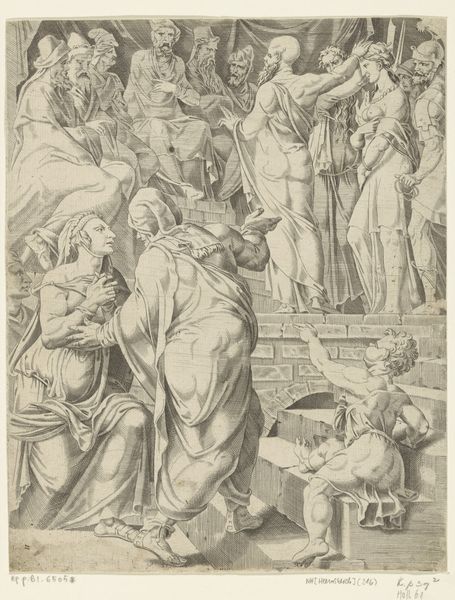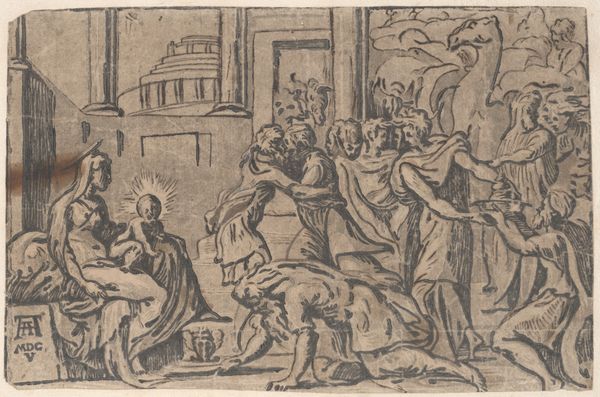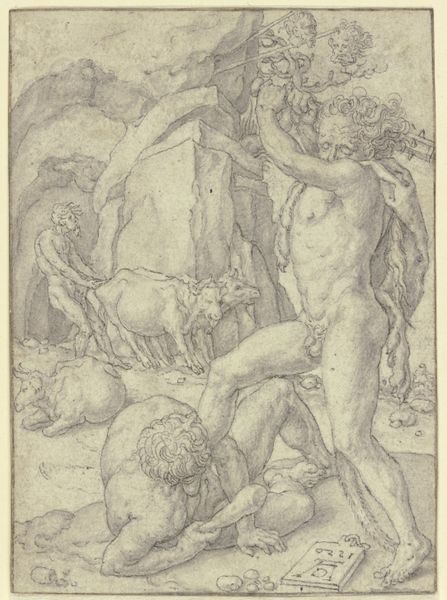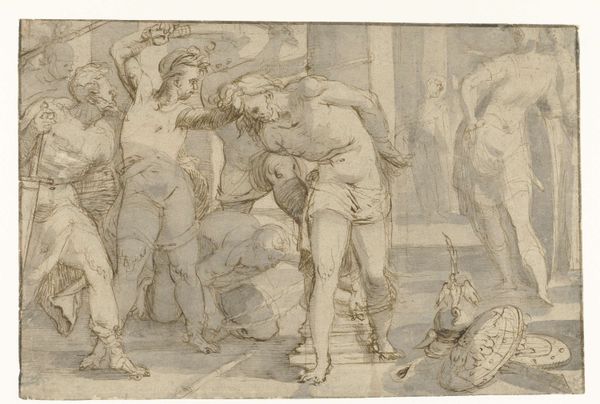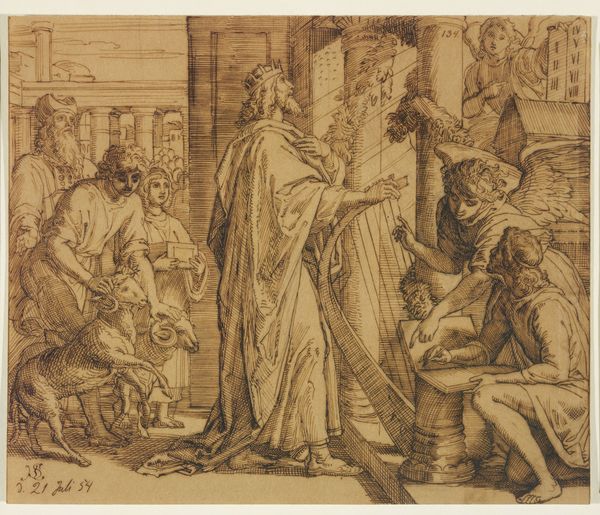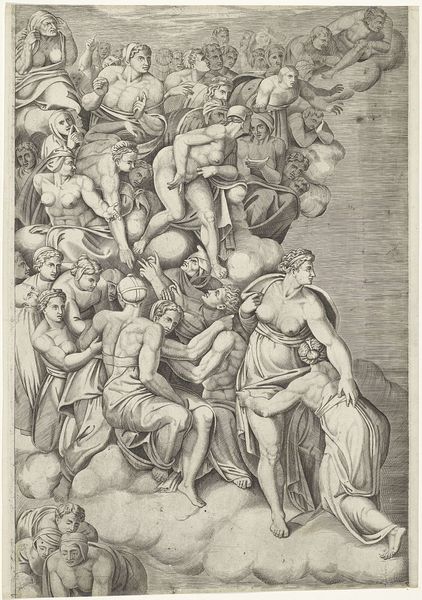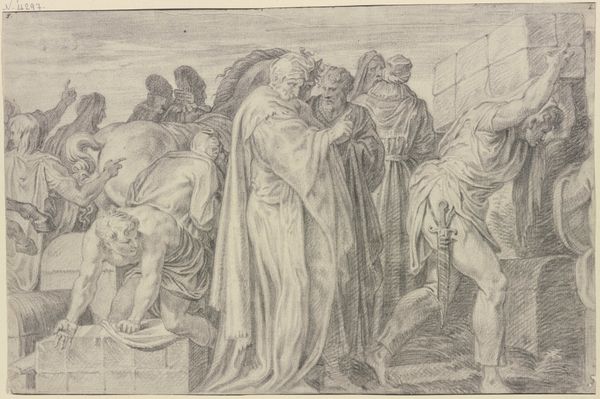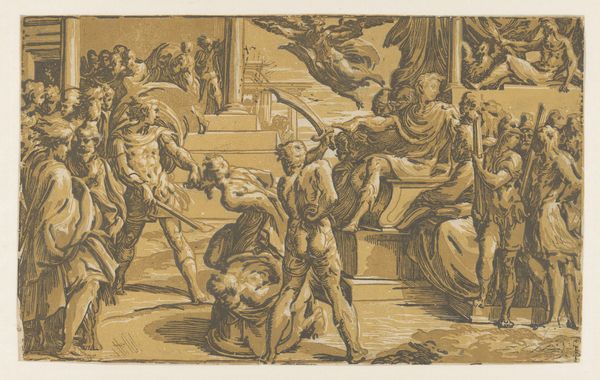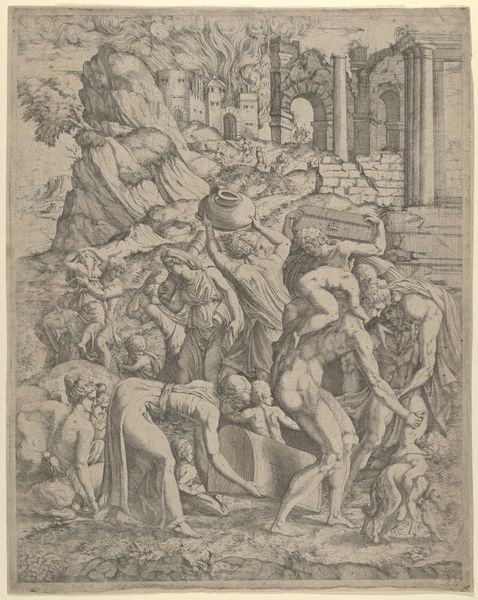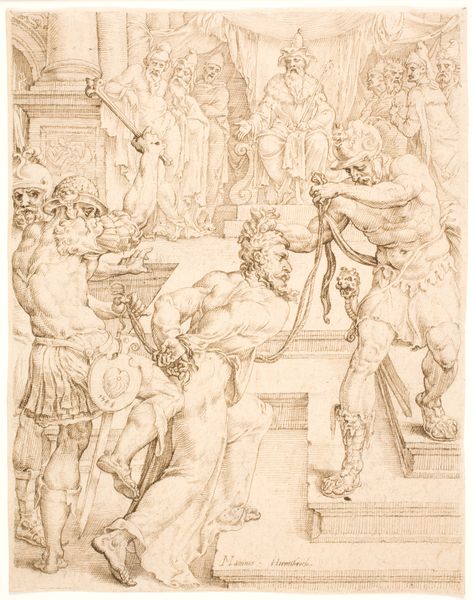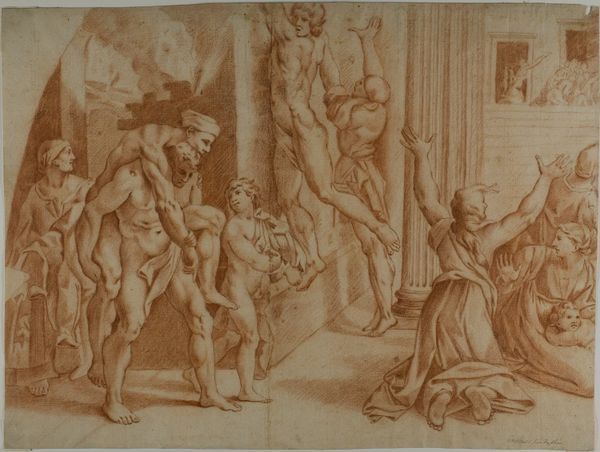
drawing, ink
#
drawing
#
narrative-art
#
figuration
#
ink
#
line
#
history-painting
#
academic-art
Copyright: Public Domain
Editor: This is Julius Schnorr von Carolsfeld’s "Enthauptung Johannis des Täufers," or "Beheading of John the Baptist," created in 1857 using ink in a drawing. It’s a chilling scene, expertly rendered with sharp, precise lines, almost clinical in its depiction of violence. How would you interpret its visual construction? Curator: Precisely. Note the dominance of line and the relative absence of tonal modeling. This flatness encourages us to read the composition as a sequence of interlocking shapes. Consider the diagonal formed by the executioner’s arm and the victim’s body, bisected by the verticality of the prison bars and figure standing at center-back. Editor: The composition certainly is deliberate. What’s the effect of organizing the forms and figures this way? Curator: This strategic arrangement mitigates any emotional excess by imposing formal control. Do you observe how the graphic style distances us from the depicted suffering? The sharp lines contribute to the brutal aesthetic, transforming the horrific into a study of form. It begs the question: what exactly are we being shown? Editor: So, rather than a direct emotional engagement, we're invited to analyze the formal choices used to depict such a charged subject. I hadn’t thought about it that way. Curator: Indeed. The stark lines and calculated arrangement, paradoxically, offer a sense of aesthetic refinement to the macabre, and invite close visual investigation into their function and effects. Editor: I'm starting to understand the power of form in dictating our response, or in this case, carefully modulating it. Thanks!
Comments
No comments
Be the first to comment and join the conversation on the ultimate creative platform.
